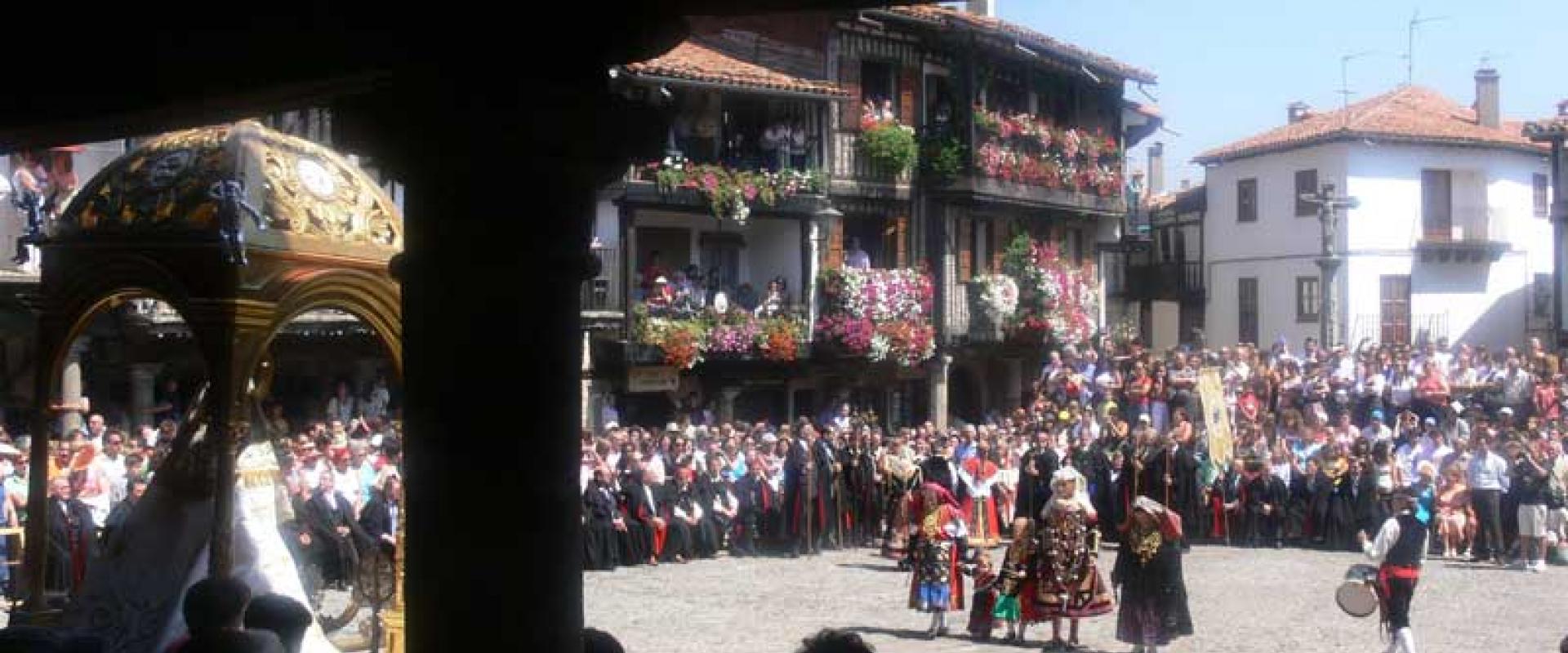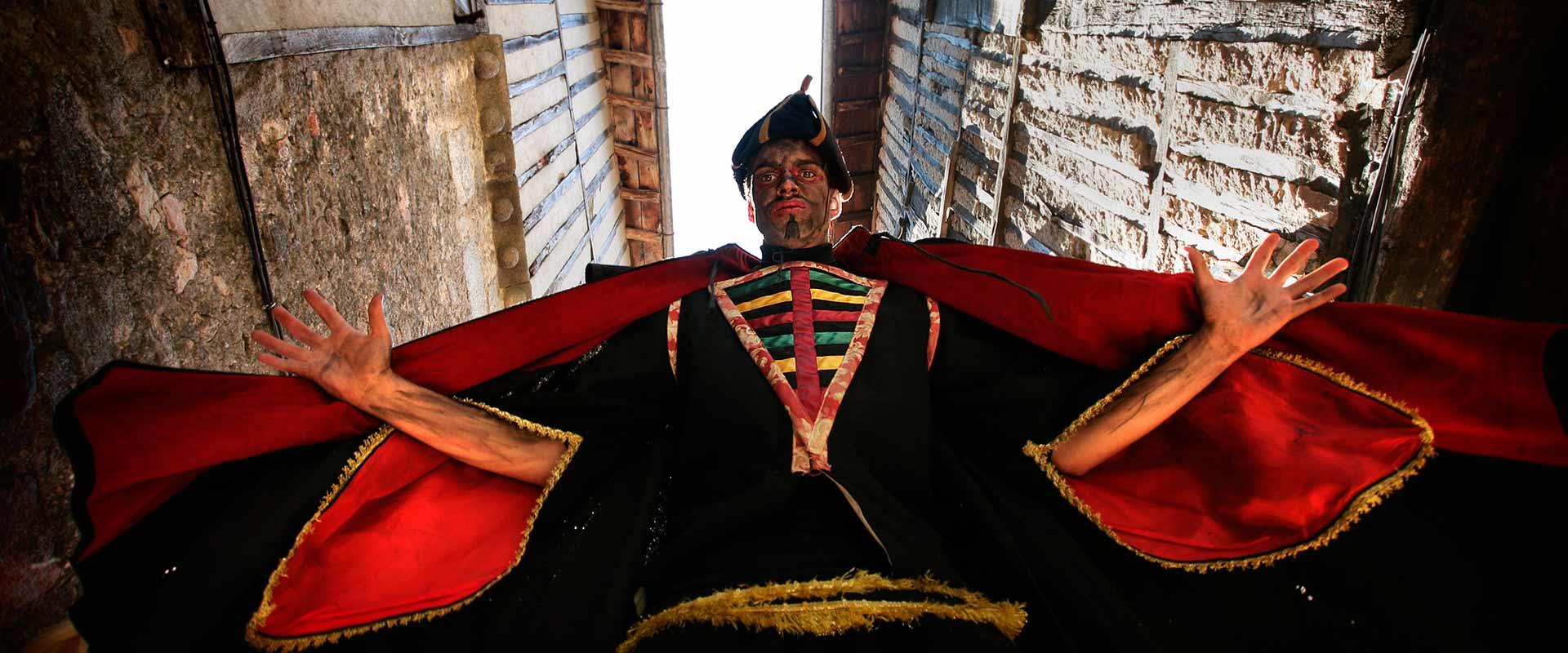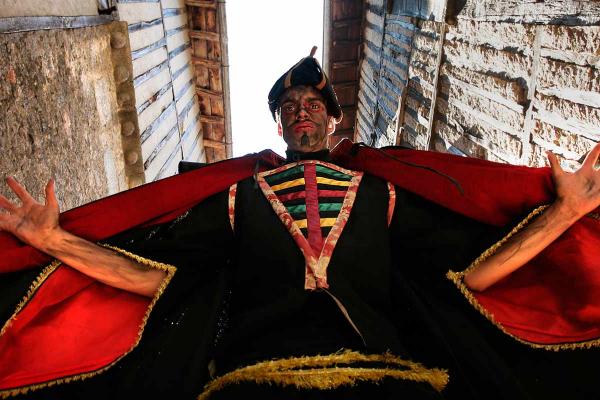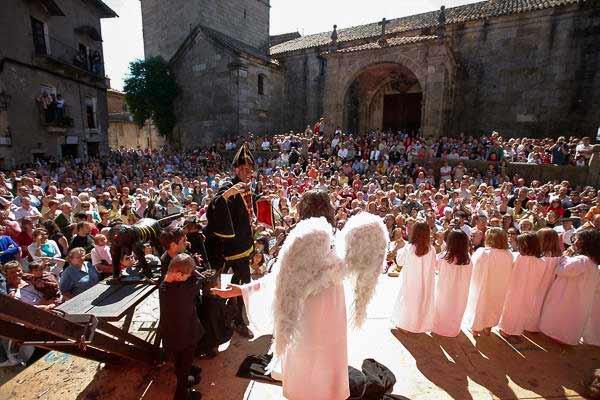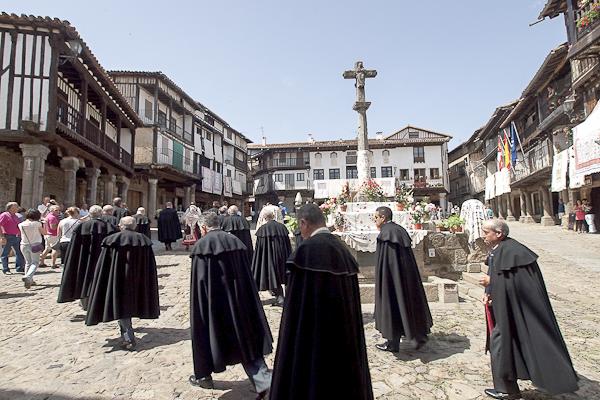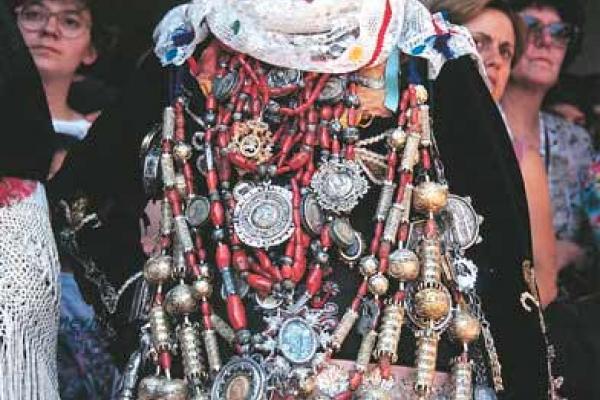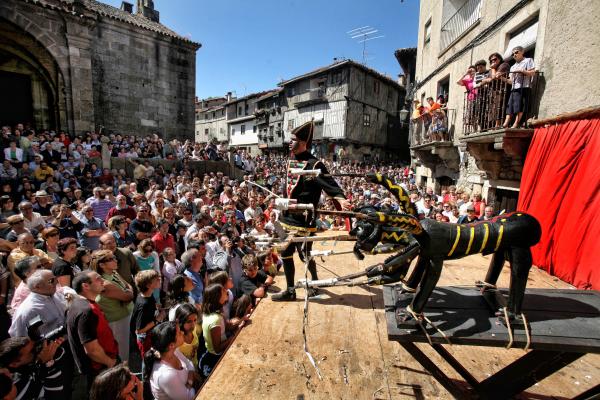Traditional Fiestas in La Alberca
Talking about La Alberca is talking about tradition which can be felt everywhere, in the streets, in every corner, in the houses and rooted celebration. Among all the celebrations, we can point out the Ofertorio and La Loa, both of them declared of National Tourist Interest.
The Diagosto has been celebrated for more than five centuries to honour the Virgin Nuestra Señora de la Asuncion. In the beautiful Main Square, the “mayordomos” (religious administrators) and inhabitants of the village give offerings and dance in front of the Virgin, who is dressed up with the most amazing costumes and jewels.
In fact, this is unique occasion to be able see the magnificent traditional costume of this village, which is one of the best regional costumes in the country,
The next day, at the atrium of the church, The Loa is celebrated. This is a religious play of medieval origin; the inhabitants of the villages are the characters of the play. Angels and demons share the stage in a fight where the good defeats the evil.
The Corpus Christi is another fiesta in La Aberca when the beautiful traditional architecture of this village shines on its merit. The inhabitants of the village try to decorate the balconies and windows of their houses with bedspreads, shawls, …which are beautifully embroidered. If they put a black ribbon on top of the cloth or embroidered bedspread, it means that the family put it as a signal of mourning.
Cloths on the top of the houses, thyme on the floor, colour and scent, fill the place. That is the way the procession streets are decorated to embellish the image of Jesus Christ. All along the streets we can find some altars, also beautifully decorated with cloths, flowers and statues of Baby Jesus.
The first altar is situated in the beautiful Main Square. The Local authorities take the pallium to that altar where they give it to the “mayordomos”. These ones carry it in the procession.
At the atrium of the church, known as the Solano Bajero, the offertory is celebrated solemnly. Mayordomos and members of the brotherhoods, dressed up with the traditional plain capes, kneel down three times but always facing the image of Jesus Christ. The children who have taken their Holy Communion that year throw rose petals when the custode.
